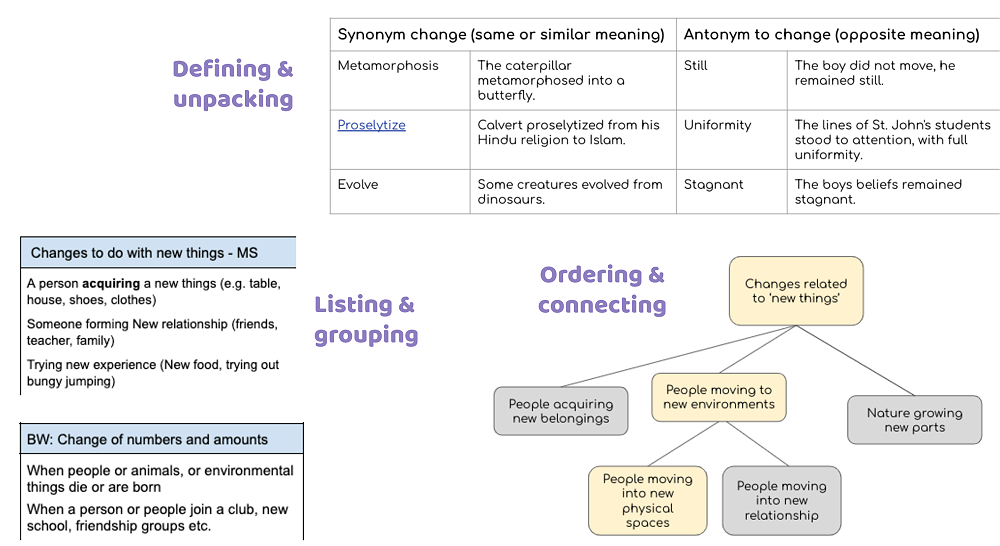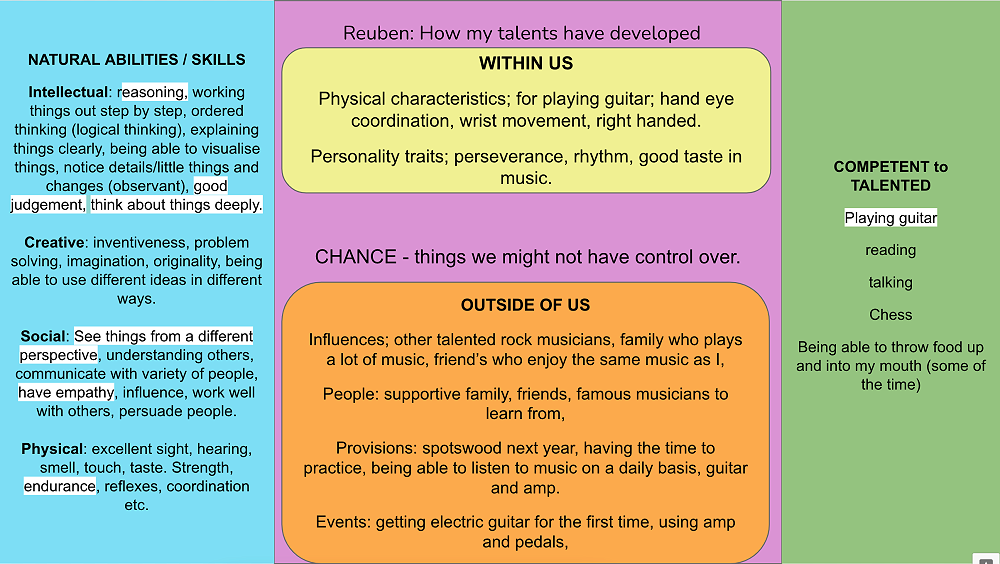From concrete to complex
The overarching theme of this year’s programme has been ‘change’. To better understand the concept, we started by defining and coming up with examples of change - from getting taller, to stars dying out. We then looked across these examples to see what connections we could make, if we could group, and even order these.
Throughout the programme there were multiple ways students could contribute their thinking - discussions in Zoom, the chat, and adding to shared online docs. eTeacher, Jen Hammonds, kept track of what and who was progressing ideas through students 'initialling' their thoughts or creating their own Google Slide.

As students created their visual hierarchies, we discussed the idea of making general statements - statements that included more and more examples, until we began to make ‘big’ statements that might hold true for all types of change. These ‘bits of gold’ were panned out and refined - we looked up words, tried to come up with examples that proved our statements wrong, reworded and tweaked until we agreed on several abstract statements related to change.
All changes, visible or not, are change all the same.
Change is perceived differently.
All change is new.
Change is inevitable, growth is optional.
From here we delved into the details and explored specific context. Students created a visual montage and listed changes related to an area of interest. Several related questions were generated, reworked to become ‘researchable’ and then as a group we suggested methods in which to research them. Each group worked collectively on a question and put ‘surveying’ into action with Google Forms.

Our second context was talent, and specifically what students wanted to develop during high school. Students looked across several theoretical models and used Joseph Renzulli as a guide for looking deeper into how their talents have developed thus far, and what could be of influence in the next few years.

To bring us to a close, students reflected how their specific contexts tied into big ideas they had generated - it was 25 weeks full of fun warm ups, deep discussions, and refining of ideas. Ka pai ō mahi tātau!